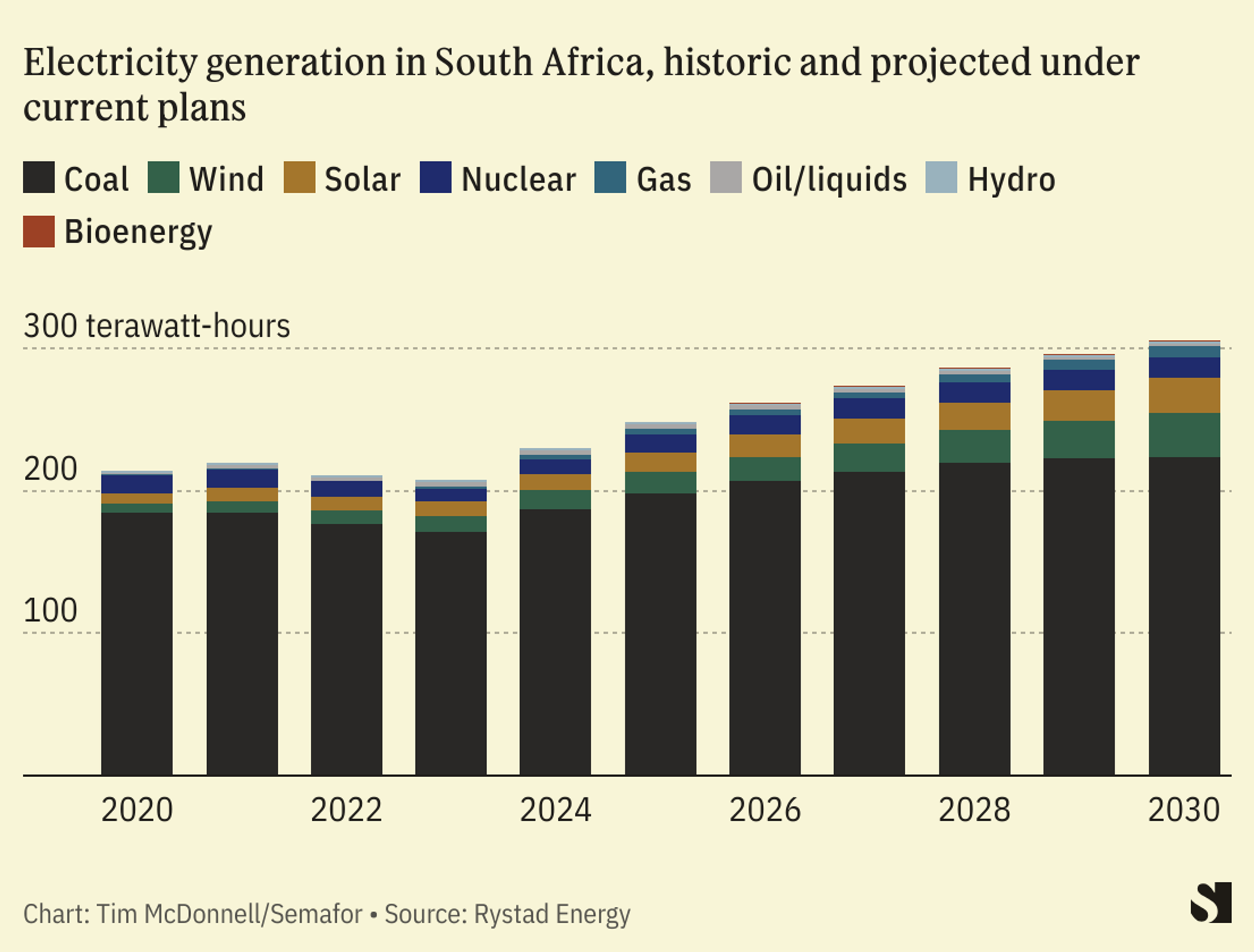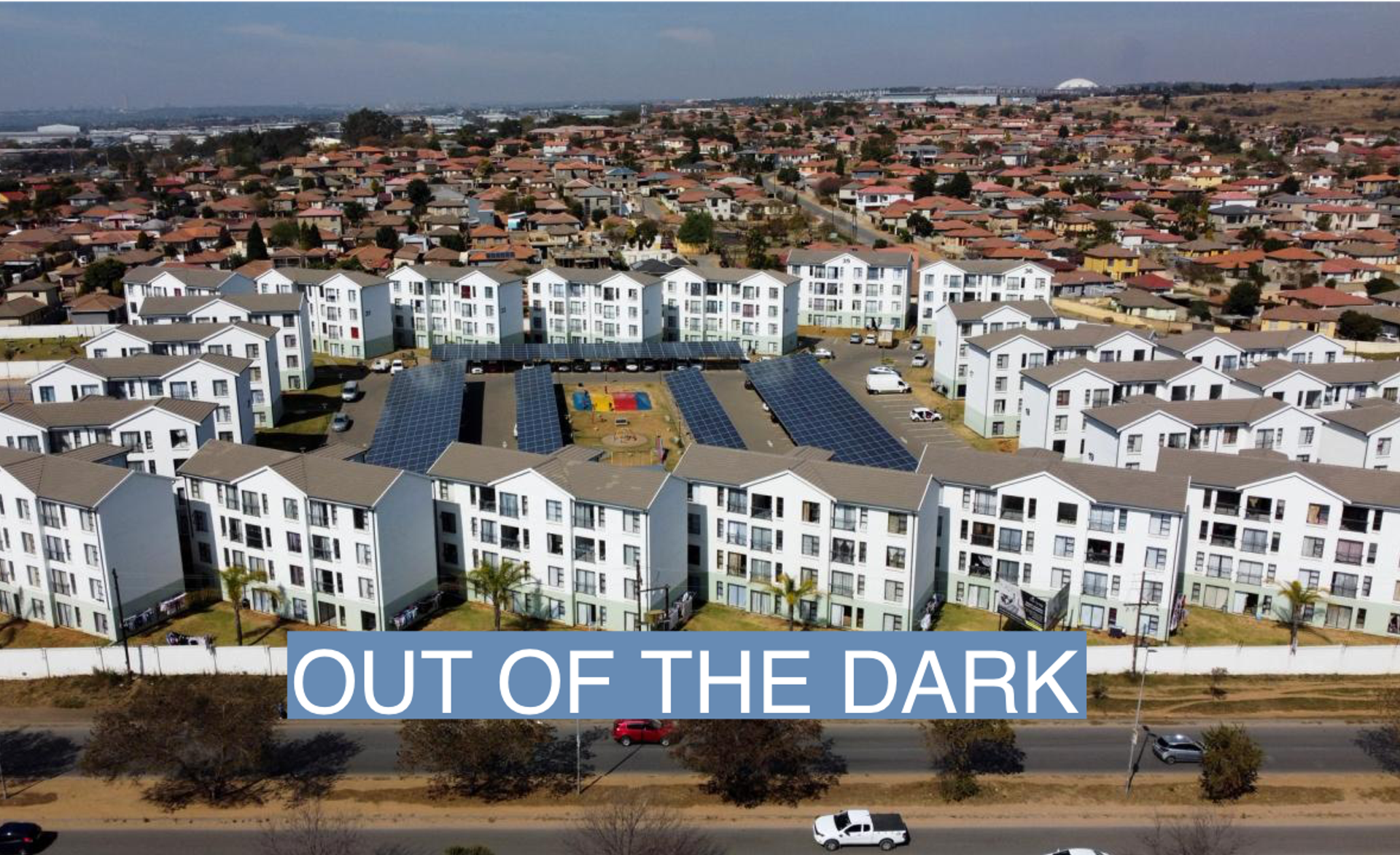The News
Installations of solar panels are surging in South Africa as a growing number of households and businesses tire of recurrent power cuts. According to new data from the state-owned utility Eskom, the country added more than one gigawatt of solar in just the last two months, a 31% increase and more than it added in the preceding six months.

“What you’re seeing in these numbers is households and the private sector taking matters in their own hands,” said Wikus Kruger, director of the Power Futures Lab at the University of Cape Town. “It’s being driven not by government policy per se, but by desperation.”
Tim’s view
South Africa’s solar boom shows how the falling costs of renewables have made them more viable as solutions to dysfunctional electric grids — for those who can afford them.
Multi-hour blackouts are still a daily reality for most South Africans, as Eskom’s aging power network, which is heavily dependent on coal, drowns in debt and mismanagement, and can’t keep pace with demand. There were more hours of “load shedding” in the first six months of 2023 than in all of 2022, according to research firm Rystad Energy. The traditional alternative for households, diesel-fuel generators, are extremely expensive, not to mention noisy and polluting. The country’s solar market, on the other hand, has been boosted by record low prices offered by Chinese exporters, new tax credits, and regulatory reforms that made it easier for developers of large solar farms to sell power into the grid. Imports of home batteries are also soaring.
But the solar boom is also a story of inequality. Solar is still unaffordable for a majority of South African households, which means uptake is likely to level off soon, Kruger said.
“What we’re seeing now is the low-hanging fruit,” he said. “But I’m concerned about how sustainable this is.”
At the same time, the mass abandonment of Eskom by higher-income households could subvert the utility’s traditional business model in a way that effectively causes low-income households to subsidize higher-income ones. Electricity bills include variable charges for power consumed, and fixed charges that pay for the use of grid infrastructure. A rich household that installs rooftop solar isn’t “off the grid” (they still need grid power at night, for example). But because solar-equipped households pay less overall, low-income households are stuck paying for a higher proportion of the fixed infrastructure costs.
The upshot, Kruger said, is that the government needs to do more to make solar accessible to all households — potentially via higher taxes on fossil energy sales — in addition to the longstanding need to resolve Eskom’s litany of problems.
For now, the solar boom is actually helping Eskom, which needs to generate that much less power as a result: “They need more generation on the grid, and this way they don’t have to pay for it,” Kruger said. But longer-term, the loss of revenue will only exacerbate the utility’s financial woes, leading to more blackouts and more defections — what experts call a utility “death spiral.”
Room for Disagreement

In the big picture of South Africa’s climate targets, all this new solar is still just a drop in the bucket. By 2030, the country is aiming to get 41% of its power from renewables, up from 11% today. But because total consumption is rising quickly, and because Eskom is still constructing massive new coal-fired power plants, the share from renewables will likely fall short of the 2030 target, according to Rystad. “The coal and gas South Africa is building will nullify a lot of the renewable energy growth,” Rystad analyst Nivedh Thaikoottathil said.
The View From Beirut
Solar has also come to the rescue in Lebanon, another middle-income country where the electric grid is in shambles. Generator costs can add up to nearly half of monthly income for many Lebanese households, according to Human Rights Watch, and solar is increasingly popular as an alternative, with an estimated 50,000 rooftop systems now installed. But as in South Africa, upfront costs are still beyond reach for many — a rooftop system can run as much as $10,000, in a country where access to credit and foreign currency are extremely limited.
Notable
- Some South African politicians are frustrated by international pressure to close the country’s coal plants. This week, Kgosientsho Ramokgopa, the electricity minister, called the closure of one plant, part of an $8.5 billion foreign aid package unveiled at COP26, “an injustice” and said that South Africa is being treated as a “guinea pig” in the energy transition.
